Tromsø is a small metropolis on an island among islands at 69 degrees latitude in the Arctic Circle of northern Norway. A dense little city is packed into an area of about a couple square kilometers on this small island, which is connected on both sides by two-lane bridges leading to winding coastal roads snaking along the edges of islands of various sizes. Not far from city center the roads quickly become rural, passing small collections of sleepy towns and occasional harbors, sitting at the base of towering mountains—known as fjords—rising out of the sea. This is the home of Tromsø Skyrace, a collection of three courses that ascend from the city into these steep hills the first weekend of August each year.
The brainchild of Kilian Jornet and Emelie Forsberg—two of the most skilled mountain runners in the world—the the Tromsø skyraces are known for their steep climbs and technical terrain. Most notable being Hamperokken, the highpoint of the 60km race which bears the peaks name.
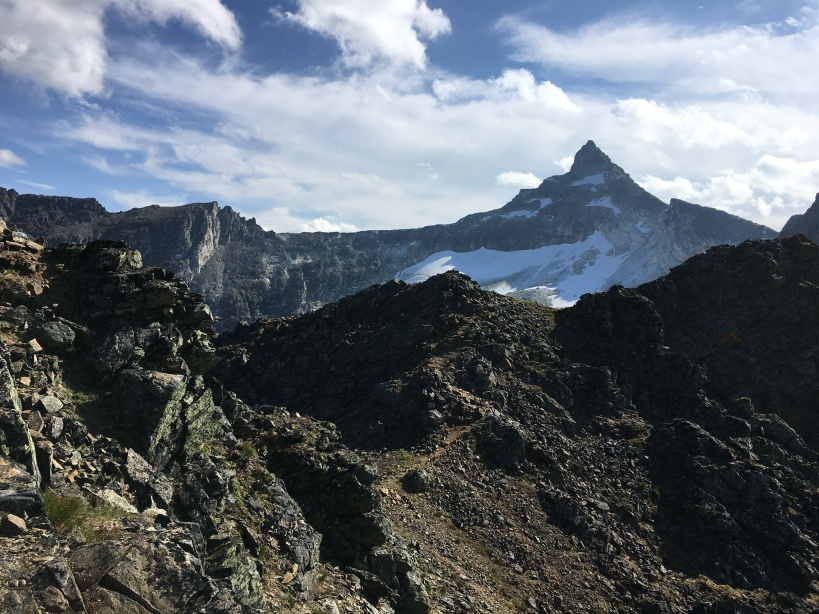
Hamperokken is a crooked spike jutting into the clouds and surrounded by jagged ridges and crumbling glaciers. As the halfway point of the course, runners reach the peak relatively fatigued after ascending and descending Tromsdalstind once, which they must turn around and complete again. By the time competitors reach the finish, they have completed nearly 37 miles and 15,750’ gain—a hefty course for even the most technically adept.
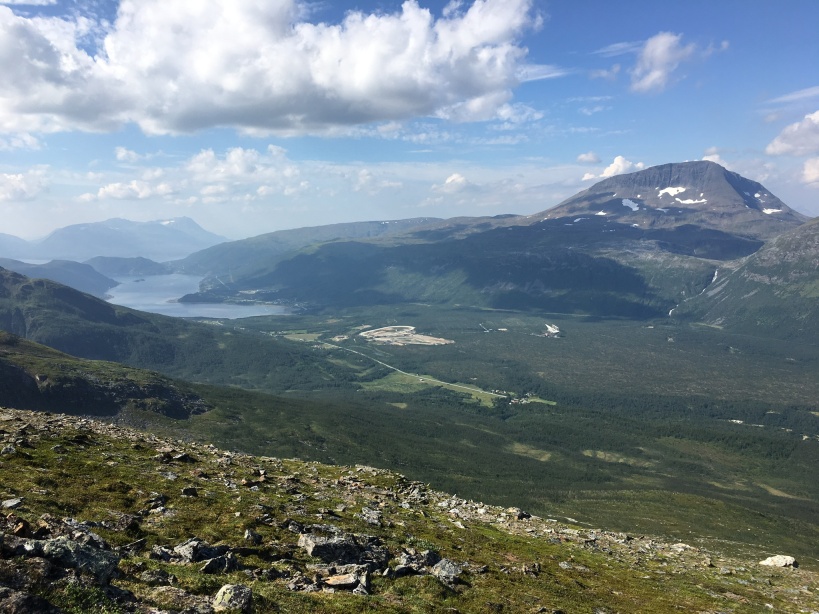
A shorter, but still difficult course, the Tromsdalstind 30km ascends the first peak once, still giving roughly 5500’ gain in 18 miles. Additionally, blammen Vertical Kilometer uphill race is held on Friday which is a test of pure power on a mountain just west of Tromsø.
The races draw nearly 500 runners from all over the world. Several come to Tromsø to compete in the Skyrunning World Series, which is a collection of European races held in the most rigorous mountain terrain. Among the series, Hamperokken 60km has earned a reputation for being one of the most technical races on the line up. Surprisingly, many if not most of the runners who come are intrigued by the challenge despite the lack of mountains in their typical training regimen.
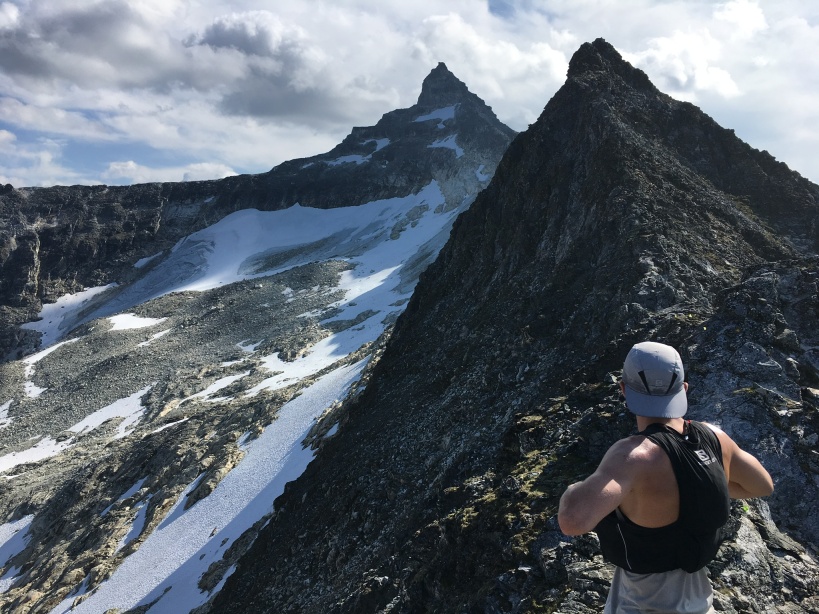
Sebastian Marker is one of these runners. From Oslo, Norway, he’s traveled up to Tromsø to stay with his mom and sister and take a short vacation from his day job in real estate financial management. He’s a road runner by practice, and especially excels at shorter distances like 10km on the track. But for this once, he is trying his hand at a longer 30km distance over the rugged terrain of Tromsdalstind on Saturday. “Troms– is the name of the area and –dalstind is like a mountain in Norwegian. So Tromsdalstind is named because it is the main mountain in the Tromsø area.”
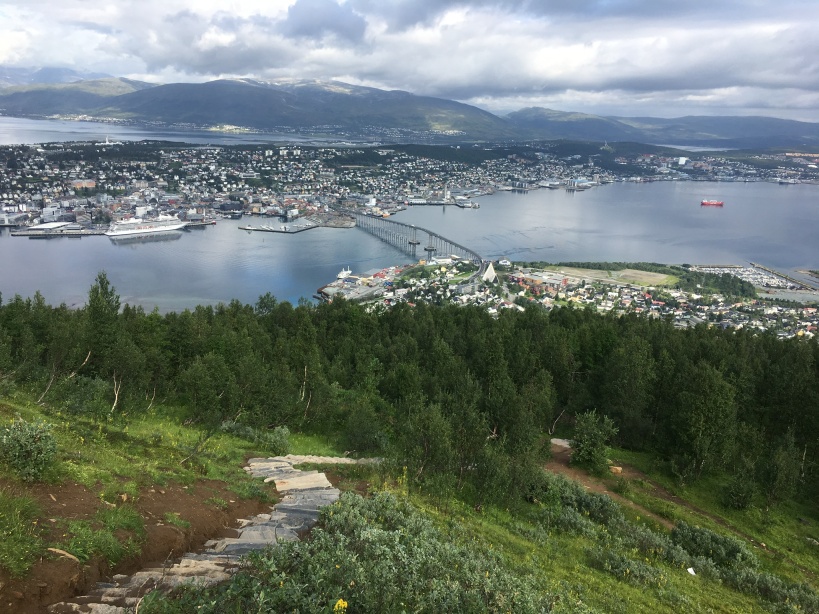
In fact one of the top tourist attractions in summer in Tromsø is to hike or ride the tram up to Fløya, with sweeping views of Tromsø’s seaside architecture and harbors, and the opportunity to view the vibrant green hills—called fjells—at the base on Tromsdalstind.
On the Wednesday before the races though, Sebastian is instead hiking Hamperokken for the sake of it, as he won’t be heading up this peak during his race. “I have only begun running about 3 years ago, so I think it is better to stick with the short one for now.”
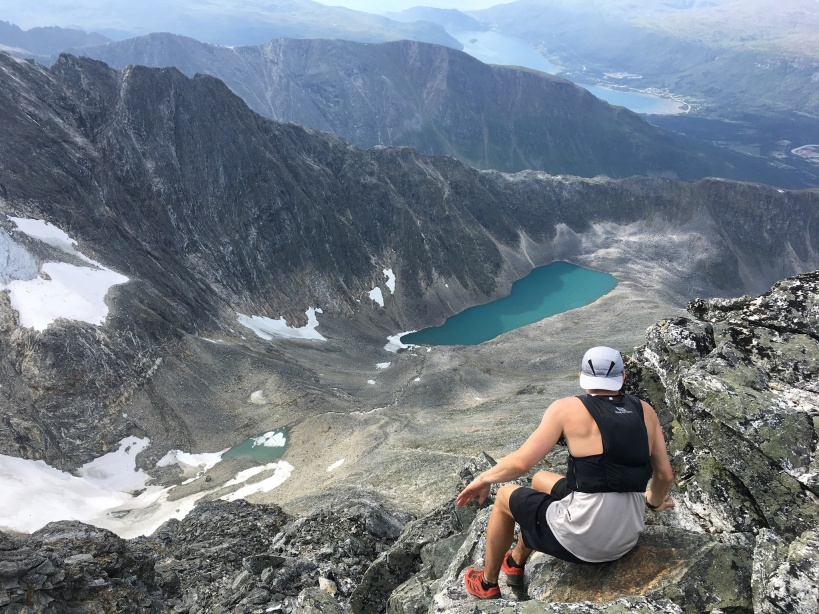
His mom and young nephew casually hike up the steep foothills while he ascends into the class 3-4 rock, taking advantage of the short window of sunny weather in the arctic. “There are probably only 2-3 days a year you can hike up Hamperokken in a T-shirt!” he exclaims. It’s a rare, warm weather pattern that leaves the rock dry, and has melted previous year’s snow fields.
Race director, Jornet, confirms the course has changed somewhat due to differences in weather from previous years. “It’s crazy, there is normally snow on the descent…this year it is all rock.” An unusual warm weather pattern in the previous days led to one night staying above 20deg C, for the first time ever in Tromsø.
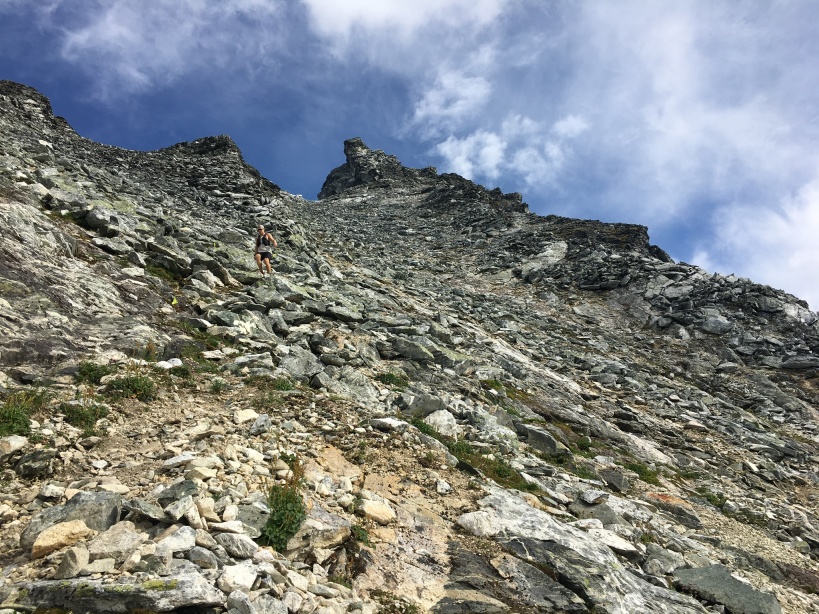
Without a snow field to glissade down for a quick descent, Sebastian works his way down the rocky descent off Hamperokken to the glacier fed lake below, and the lake invites a quick, frigid swim after the tough climbing. At a tourist pace, this 10km run so far has taken 3.5 hours. About 7 times slower than a typical 10k for Sebastian, but there is no rush during the beautiful weather as he will be racing in much worse conditions in less than three days.
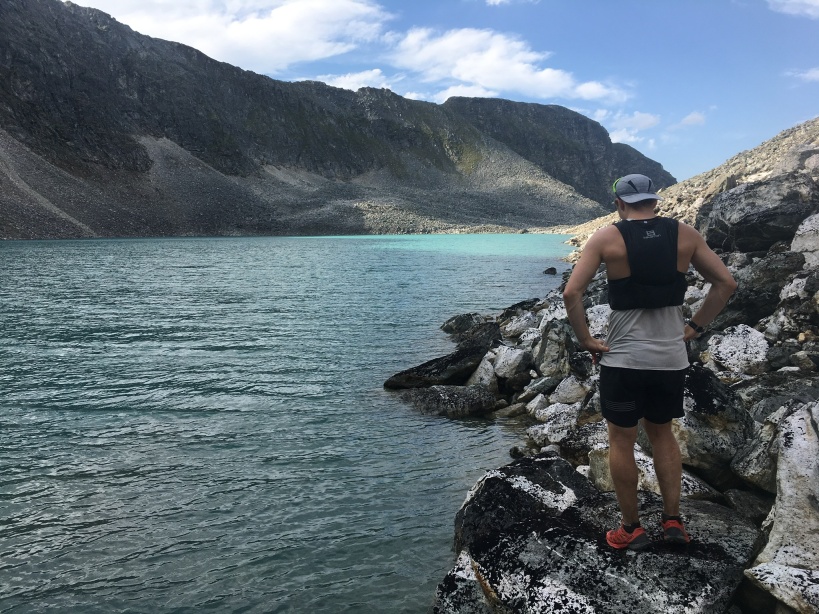
Unfortunately, the weather can quickly deteriorate in these extreme environments, and with late summer cumulous buildup and drenching showers into the weekend, the green foothills became latticed with rivulets from every direction. Both Tromsdalstind and Hamperokken hide shyly in thick clouds most of the time and the 2018 year’s race was no different.
The rocky shoulders of the mountains, became slick and slimy with lichen and mud as water streamed off the Hamperokken summit. Volunteers set ropes on several more precarious pieces at the top, where one slip could mean severe consequences.
Barely a deterrent for the top runners though, the slick rock didn’t slow former winner Jonathon Albon of Britain who was less than four minutes off his previous time and American Hillary Gerardi who set a stunning new women’s course record in 8:14.
Sunday morning, Jornet confirms all participants returned to Tromsø safely this year despite the inauspicious conditions. Volunteers stayed out steadfastly on course for nearly fourteen hours to ensure everyone made it down safely, and runners from nearly a dozen countries finished.
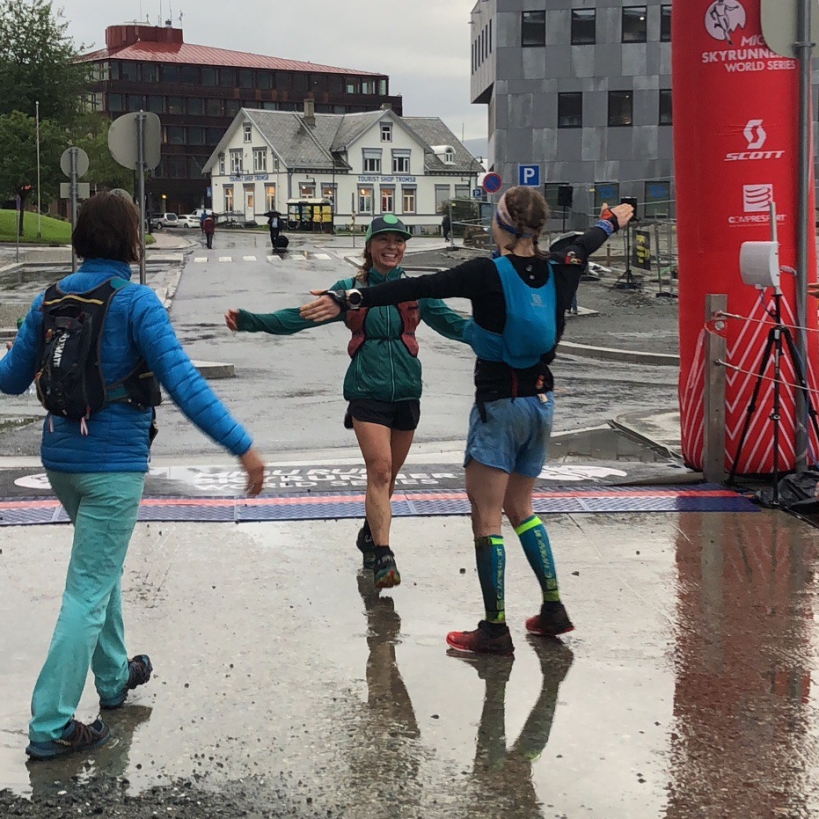
Getting to Tromsø:
Flights thorough Norway’s capitol, Oslo, on Norwegian airlines can be affordable.
Scandinavian and Norwegian Airlines both fly to Oslo.
From the airport and from city center, car rentals are available. Parking is difficult to find in the streets and is expensive during the day, but underground parking is available in a tunnel under the city. Be forewarned, parking tickets are very expensive in Tromsø and difficult to pay as you cannot pay online via credit card. Best option is to use the tunnel or download the Google Translate app to be sure you’re clear on parking signage.
Busses are available from the airport to city center and to surrounding areas on a less frequent basis.
Other things to see:
Floya—hike the Sherpa stairs or ride the fjellheisen tram to get a good view of Tromsø and the surrounding fjords and waters. The lodge at the top serves food and drinks
Arctic cathedral—on the way back toward Tromsø visit this architectural beauty. During summer, Midnight Sun concertos are held inside at 23:00.
Butka beach—for a nice picnic by the ocean, this is the main publicly accessible beach in Tromsø at the southern end of the island.
Tromso Museum and gardens—near butka you can find a nice museum outside of city center to learn about the history of the island.
Ohhallen—back in town, this is the oldest pub in Tromsø and houses Mack beer
Downtown—Polaria is a aquarium with exhibits of arctic animal life including seals which you can watch being fed. Next door is a preserved seal hunting ship to learn about the history of the craft
Sarken—another couple blocks down is a large shopping out let and this bar and pub with outdoor seating overlooking the harbor which has many local beers on tap.
Places to stay:
Race headquarters is at Clarion The Edge Hotel with luxury accommodations and rumors of excellent breakfast buffet options.
Mid-level hotels are nearby including Enter City Hotel which has rooms with small kitchenettes for more affordable meals. Booking.com lists a variety of options.
Budget camping is available at Tromsø camping over the bridge to the east of the island. Tent camping is available on a first come first serve basis but would be easiest to access via car.
For more specifics about the Hamperokken course see: HAMPEROKKEN 60KM: TROMSØ, NORWAY
1 thought on “Tromsø Skyrace, Norway: A Race of Extremes”
Comments are closed.